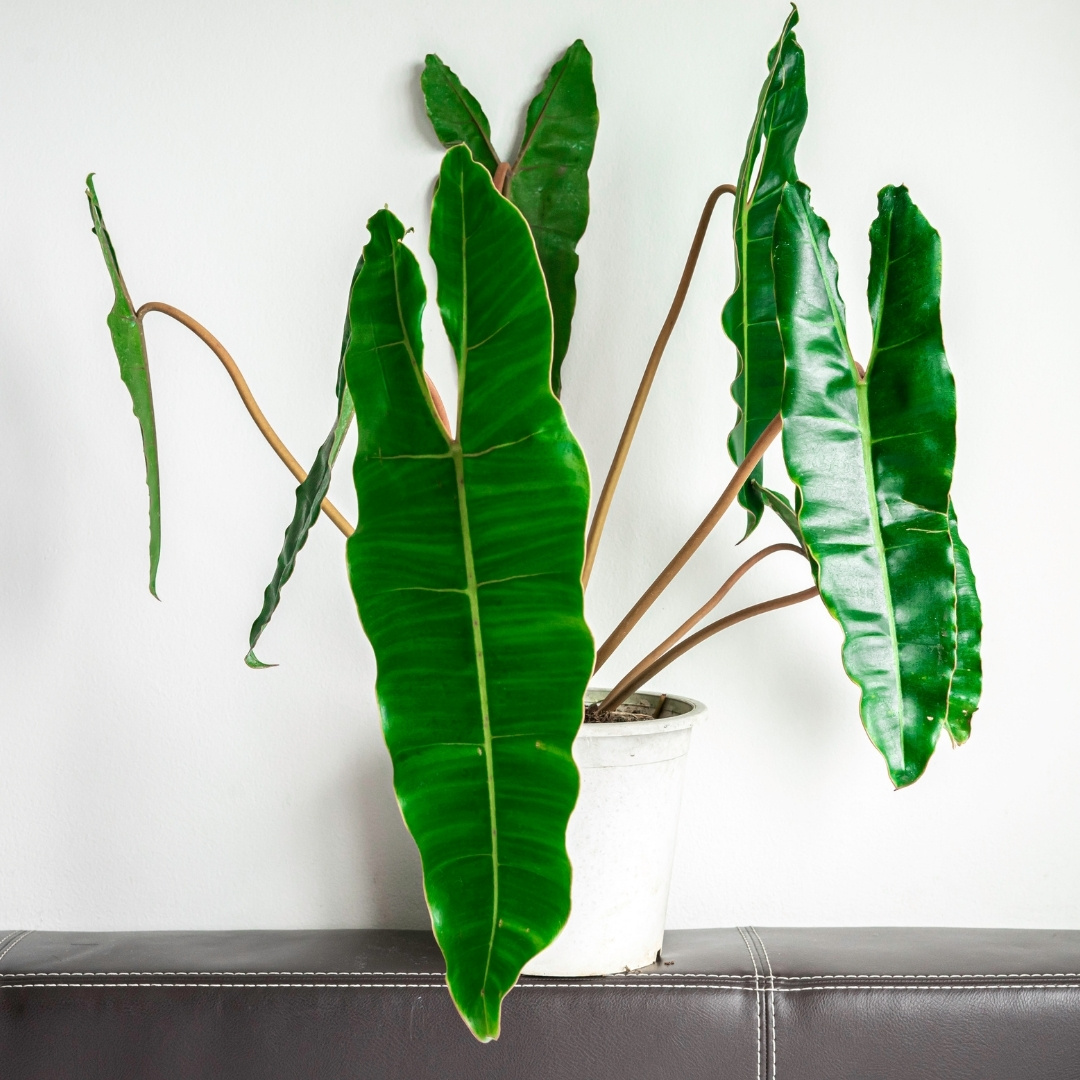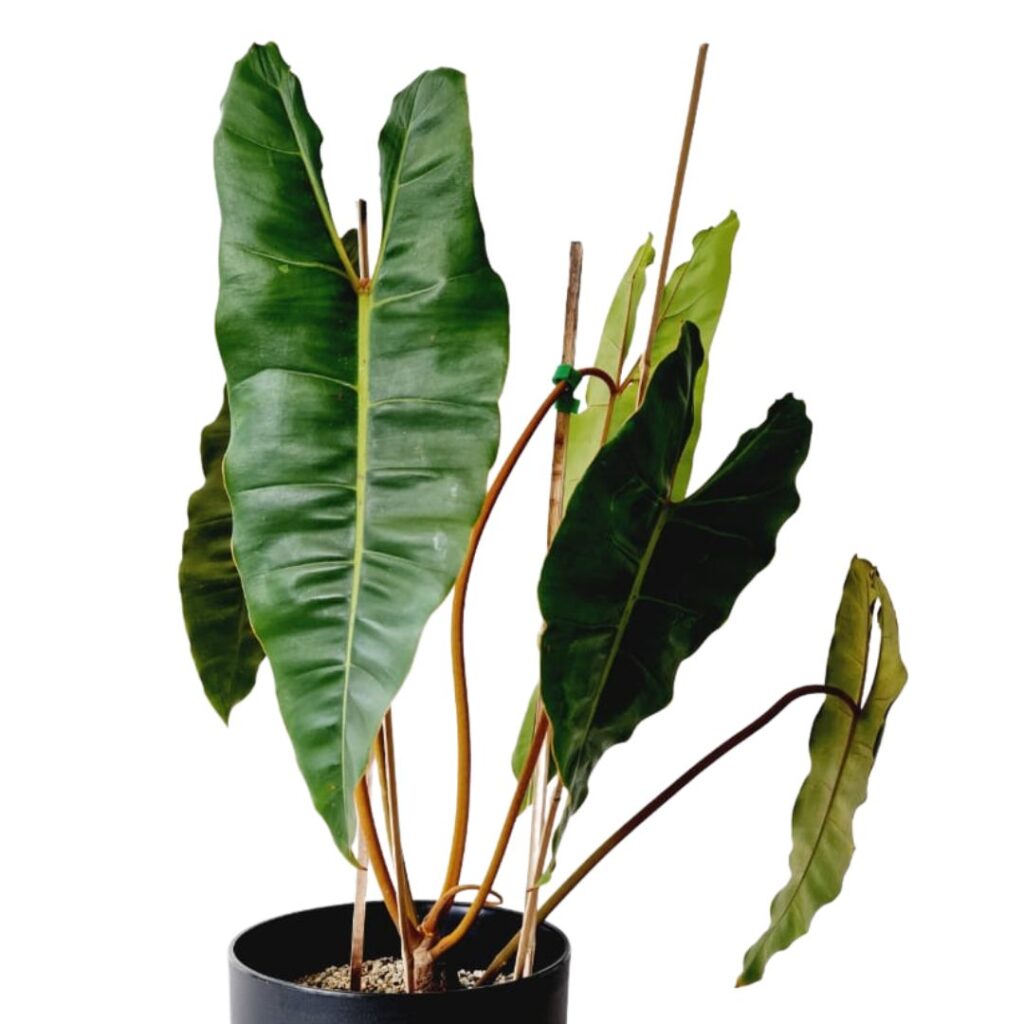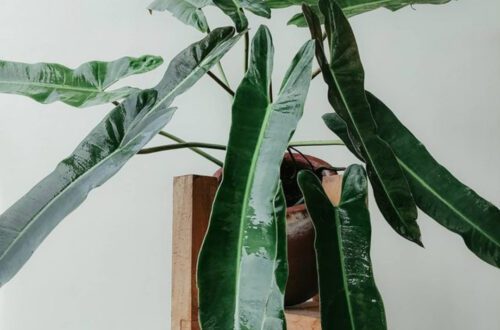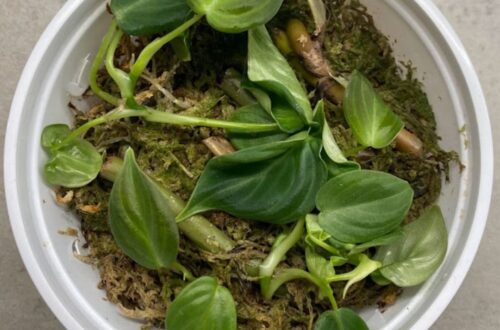
Philodendron Billietiae
Welcome to our guide to philodendron billietiae care and propagation. This plant needs good levels of humidity, a well draining, chunky soil, and not do not over water it.
Philodendron Billietiae Summary
| Light needs: | Bright indirect sunlight is ideal. |
| Watering needs: | Soil needs to be almost dry before watering again. Check once a week. |
| Fertilizer: | Use a balanced feed once a month in the spring and summer. |
| Soil: | Well draining. |
| Humidity: | 50%. |
| Temperature: | 18°C to 27°C (64-81°F). |
| Where to buy: | Try our list of Rare Plant Shops or Etsy. |
| Common issues: | Root rot from overwatering. |
Introduction
The philodendron billietiae is known for its huge, elongated pointy leaves. It’s a really cool plant, originally Brazil, and Guyana, it is now heavily in demand as a rare houseplant.
See also: Philodendron Mamei Care, Philodendron Atabapoense Care, Philodendron Brandtianum Care, Philodendron Camposportoanum Care, Philodendron Giganteum, Philodendron Gigas Care.
Tip: we recommend Etsy for buying plants. Look for the best rated seller you can, and try to buy as close to your home as possible so the plant does not travel too far.
A note about affiliate links: when you buy a plant, pots, soil, or other goods through links on this article we sometimes earn a commission. It doesn’t cost you anything, but it really helps us out if you do use them. Thanks a lot! An example of this is if you buy a plant on Etsy using this link. Read our privacy policy for more information. Thanks again.
Light Needs
Bright indirect sunlight is ideal, they’ll be fine with a little less too. Make sure they are not in direct sun or a low light area of your home. They need plenty of indirect sunlight on those leaves, but not direct which will burn it.
How Often to Water
Let the soil dry out almost fully before watering again. Check it once a week. They absolutely must not sit in undrained soil, make sure the water drains off after watering and the plant does not sit in it.
Tip: don’t let the soil get soaking wet, water it slowly until it stats drips out the bottom of the pot, then stop. Tip out any water that is in the tray under the pot too.
Philodendron Billietiae Fertilizer
Use a balanced feed once a month in the spring and summer to encourage growth. They will grow more if fed, but make sure you do not feed in the colder winter months.
Soil
A well draining soil is necessary to avoid the common issues of root rot. At least give them standard potting compost with 20% perlite. Or you can give them an even better mix of equal parts perlite, orchid bark and potting compost, which is what I have all my aroids. For more on Philodendron soil see our guide on what to buy or how to make your own: Philodendron Soil.
When To Repot
Repot when the roots become over crowded. Check the roots at Easter time to make sure they have enough space to grow over the forthcoming growing season.
Tip: Give them to a moss pole to climb up. You can tie it to it encourage upward growth, tidy the aerial roots and encourage larger leaf growth.
Philodendron Billietiae Humidity
50% humidity or more (60 or 70% is good) is ideal to get the best out those leaves. They do not want to be too dry, upping their humidity will help them flourish and unfurl well.
Temperature
From 18°C to 27°C (64-81°F) is an optimal range for a philodendron billietiae. Try to keep them above 12°C (54°F) a minimum temperature at night and in the winter.
How To Propagate Philodendron Billietiae
It is relatively easy to propagate this philodendron You just need to take a cutting with at least one node and one leaf on it. Let the cutting callus over for about an hour or two before planting it up as this will allow the wound to heal and will reduce the risk of rot. Then plant the cutting up into a cup of wet sphagnum moss. Then leave it for roots to develop. During this time keep the Moss wet and the plant in general humid and keep it in a warm bright space in your house like a south facing window but don’t let it get any direct sun. After one to three months you should see a healthy root system develop and the plant will start to put out growth and leaves from the top at this point you can plant it up into a it’s proper it’s final part its proper pot and water it in and you’re done.

Philodendron Billietiae Variegated / Variegata
There is a variegated version of the philodendron billietiae. It has big patches of pure yellow color as well as mottled areas of green and yellow variegation. The good news is that care wise it is exactly the same as the standard version of the plant all you have to do is be very careful with light because the if you give it too much direct sun it could burn the leaves and if you give it to little sunlight the variegation can fade. So give a good amount of bright indirect sunlight with no direct sun.
Philodendron Billietiae Black
There is a darker form of this philodendron called the philodendron billietiae black it is exactly the same as the standard version of the plant but has much darker green leaves the care wise it’s very similar to the standard version of the plant you don’t have to do anything else much differently. It is just really expensive your accountant would not like this plant!
billietiae vs atabapoense
The philodendron billietiae has the same color leaves on the front and the back, but the atabapoense has a dark pink hue to he back of its leaves. Other than than they grow very similarly.
billietiae vs spiritus sancti
The spiritus sancti has much longer and bigger, slender leaves. The spritus sancti is huge for a houseplant (and is very rare and expensive).
billietiae USDA Zone
Zones 10-11.
Philodendron Billietiae X Atabapoense
There is a rare hybrid of both the philodendron billietiae and the atabapoense, which is a really nice dark, long leaved plant. Care for it the same as you would the billietiae.
Why Is Philodendron Billietiae So Expensive?
The billietiae is relatively rare, and demand out strips supply, which means sellers can charge more and buyers will pay it.
Does Philodendron Billietiae Climb?
They are a climbing philodendron. Give them a moss pole if you like to encourage bigger leaf growth.
Is Philodendron Billietiae Fast Growing?
It is relatively fast growing for a houseplant and about medium fast for a philodendron. They have big leaves that take time to develop.
Is It Toxic To Cats?
They are toxic if eaten, nd can cause vomiting or irritation. It is unlikely in most cases to result in death, but seek vets advice if your pet eats any.

Where To Buy A Philodendron Billietiae
Try one of these Rare Plant Shops. Or Etsy.
FAQs and Common Problems
Be really careful of overwatering as they are susceptible or root rot. And look out for common plant pests on those leaves.
Additional Resources
Links:
- More info on the Wikipedia page.
- More info on the Kew Gardens plant page.
- More info on the Exotic Rainforest plant page.
Other Articles You Might Like
You might also like our other articles: Philodendron Splendid, Philodendron Black Cardinal, Philodendron Florida Ghost.
Please follow us on Instagram and Pinterest for regular plant updates and occasional plant giveaways.




